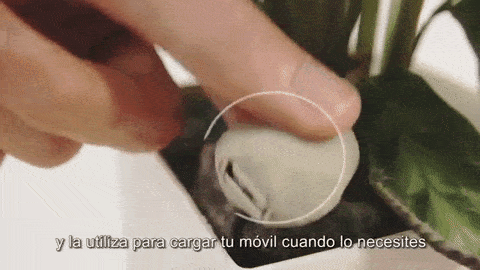Plants’ leaves are nature’s way of building solar panels. These use a process called photosynthesis to convert sunlight, water and nutrients into sugars (energy). A team of engineers piggy-backed photosynthesis using a nifty pot called the Bioo Lite. Just place almost any plant inside, add water and plenty of sunlight and you’ll be able to charge your phone via the provided USB port up to three times a day. Or so they claim.
To generate energy, the pot doesn’t use the plant themselves. Harnessing direct photosynthesis would have been sweet, but the developers found an elegant workaround.
At the bottom of the pot, there’s a chamber which hosts microorganisms. These germs produce electrons when they consume water and substances generated through photosynthesis and found at the plant’s roots.
Almost any plant works, though some work better than others. The cactus is the worst, according to the Bioo Lite team.
As long as you keep the plant watered and happy, you virtually have a renewable battery at your disposal — enough for three full charges for your smartphone or tablet in a 24-hour window. The same system could theoretically be scaled to be the size of a house. I could see a scaled version in my backyard, beneath flowers or even vegetables, powering some lights.
The Bioo Lite was launched on Indiegogo where it already met its goal. It reportedly costs $135 and starts shipping start December.







